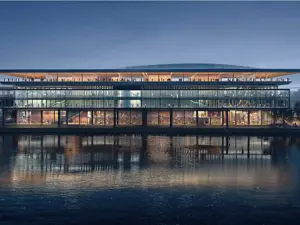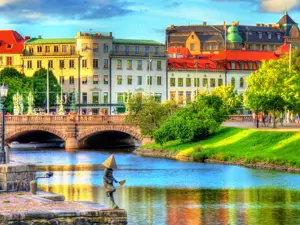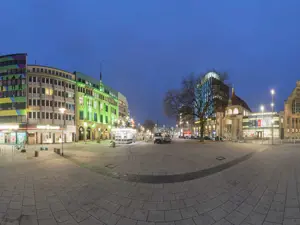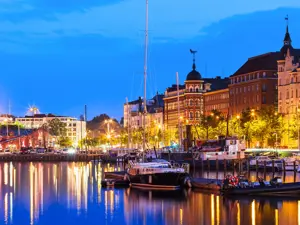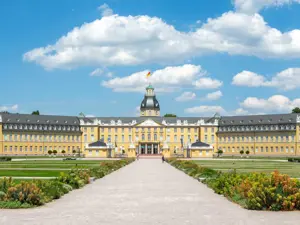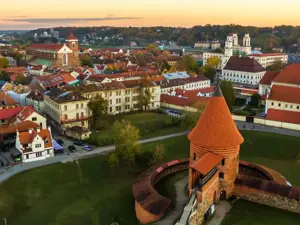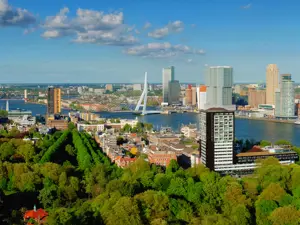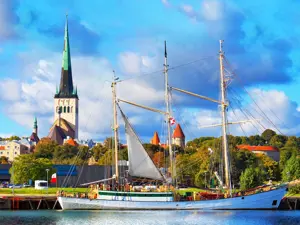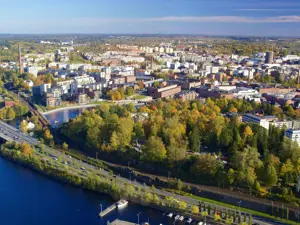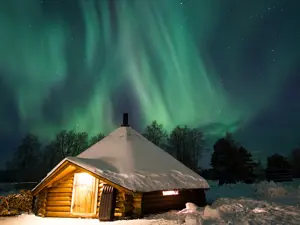Perfect blend of history and modernity
Eight hundred years is a relatively young age for a city. In the case of Riga, capital of Latvia, we can talk of a perfect blend of history and modernity. The largest city in Latvia and the Baltic region and traditionally linked to trade, it is a surprising gem of architectural styles, divided between Nordic Gothic and Art Nouveau. Its old centrewas declared a UNESCO World Heritage Site in 1997.
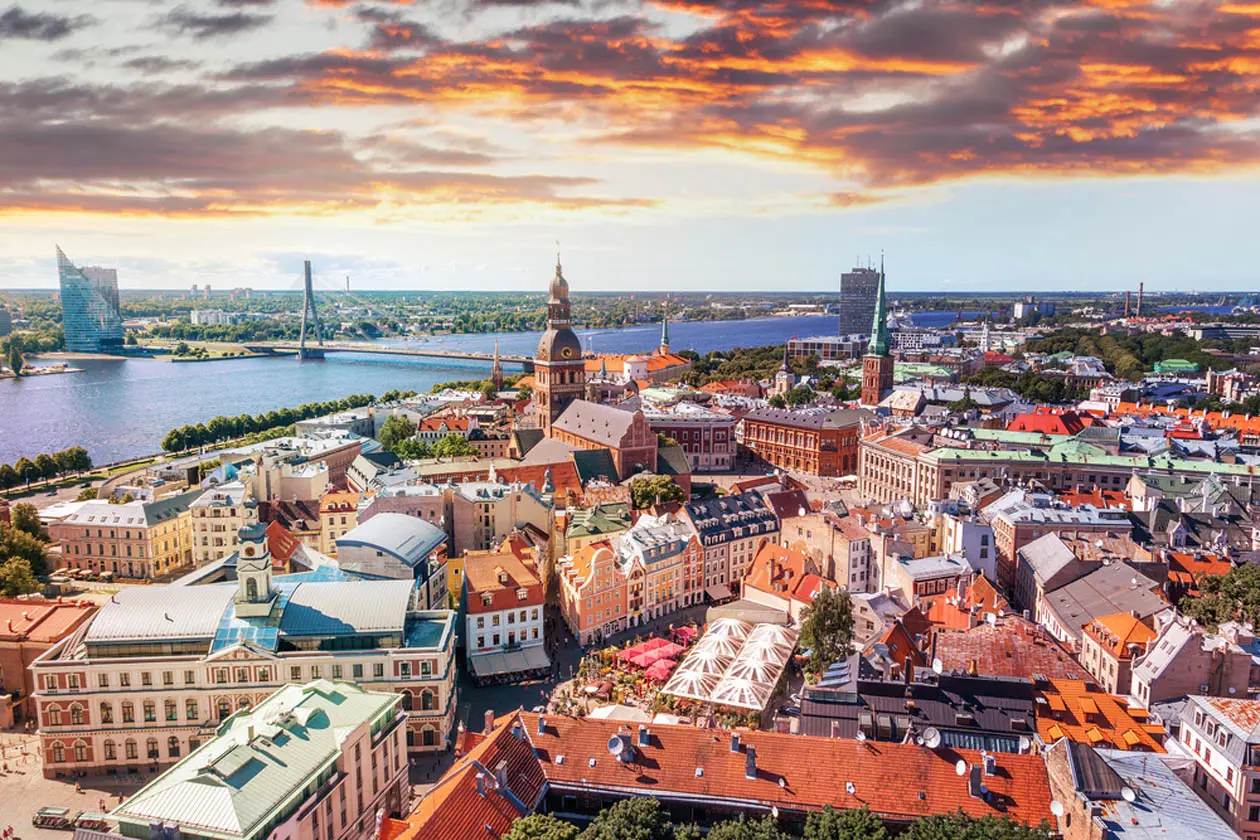
Riga. Photo: Sisterscom.com / Shutterstock
The charming beauty of Riga has been described in many different ways: it has been likened to Paris, Prague and Berlin, since it combines the best aspects of all these places. Its richness lies in the presence of two communities: the Latvian and mother-tongue Russian communities.
Riga can be easily visited on foot since many of the most interesting sights are concentrated in a radius of one km from the centre and bound by the old city where the assorted architectural styles can be found.The Art Nouveau quarter is a genuine catalogue of the caryatids and nymphs that adorn the exquisite buildings. The old city is located on the right bank of the River Daugava and many of its streets are cobbled.
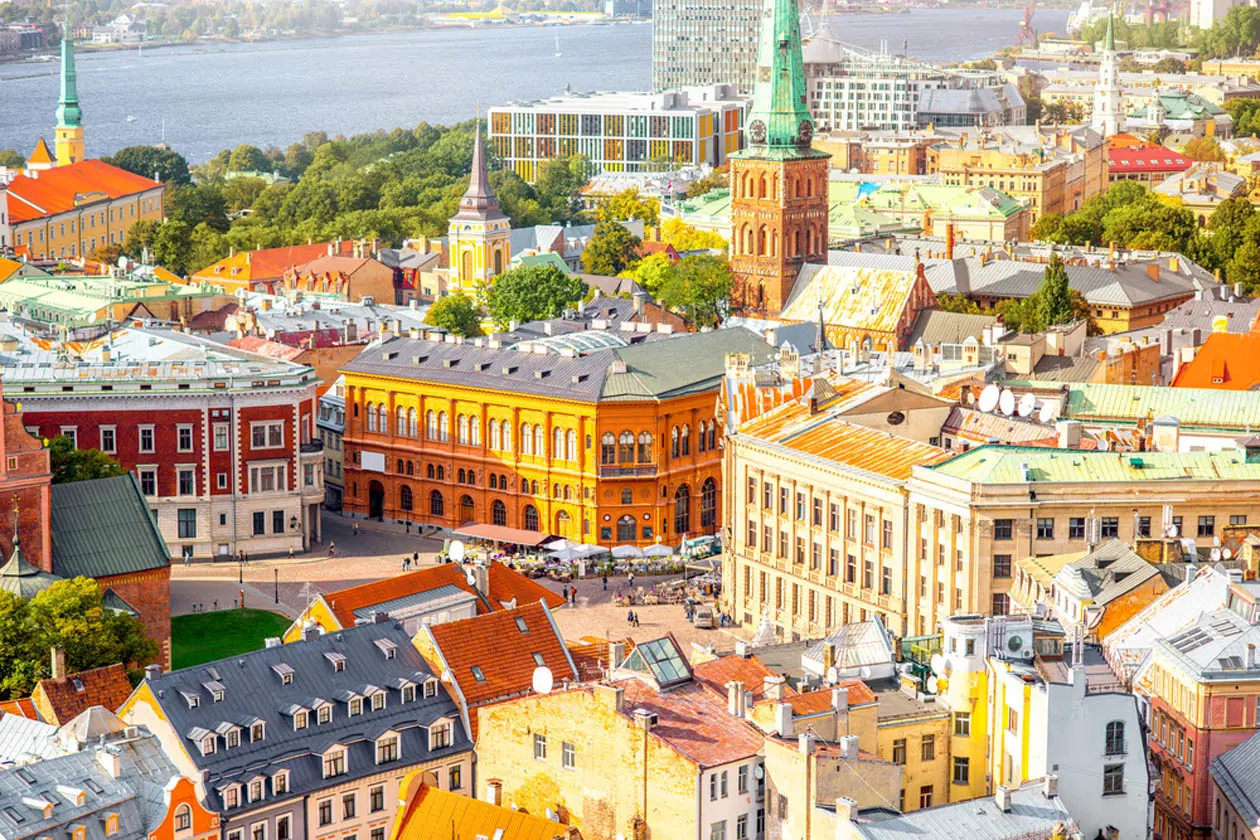
The old city. Photo: Sisterscom.com / Shutterstock
The place par excellence of the old city is the House of Blackheads, located in the Town Hall square. This Medieval building features enormous pediments with decorated cornices and niches adorned with statues. A statue of Roland, the legendary eighteenth-century knight who was killed by the Moors in battle in the Pyrenees, sits in the centre of the square.
The Cathedral
The Cathedral, the largest place of worship in Latvia, is a mixture of Gothic, Baroque and Romanesque styles and houses one of the largest pipe organs in the world.
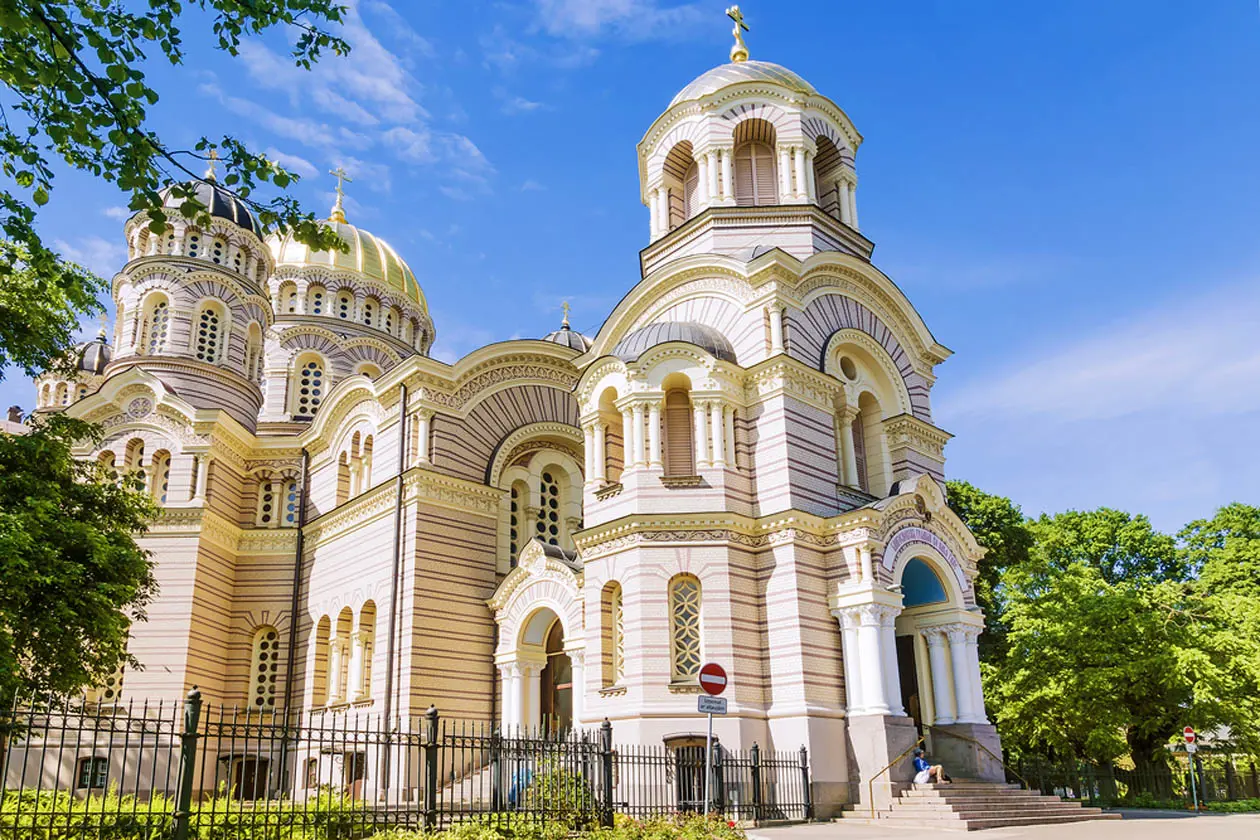
The Cathedral. Photo: Sisterscom.com / Shutterstock
A view over the entire city can be enjoyed from the spire of the red-brick Church of St. Peter. A curious fact: most of the churches in Riga have golden cockerels on their bell towers, which symbolise protection against evil.
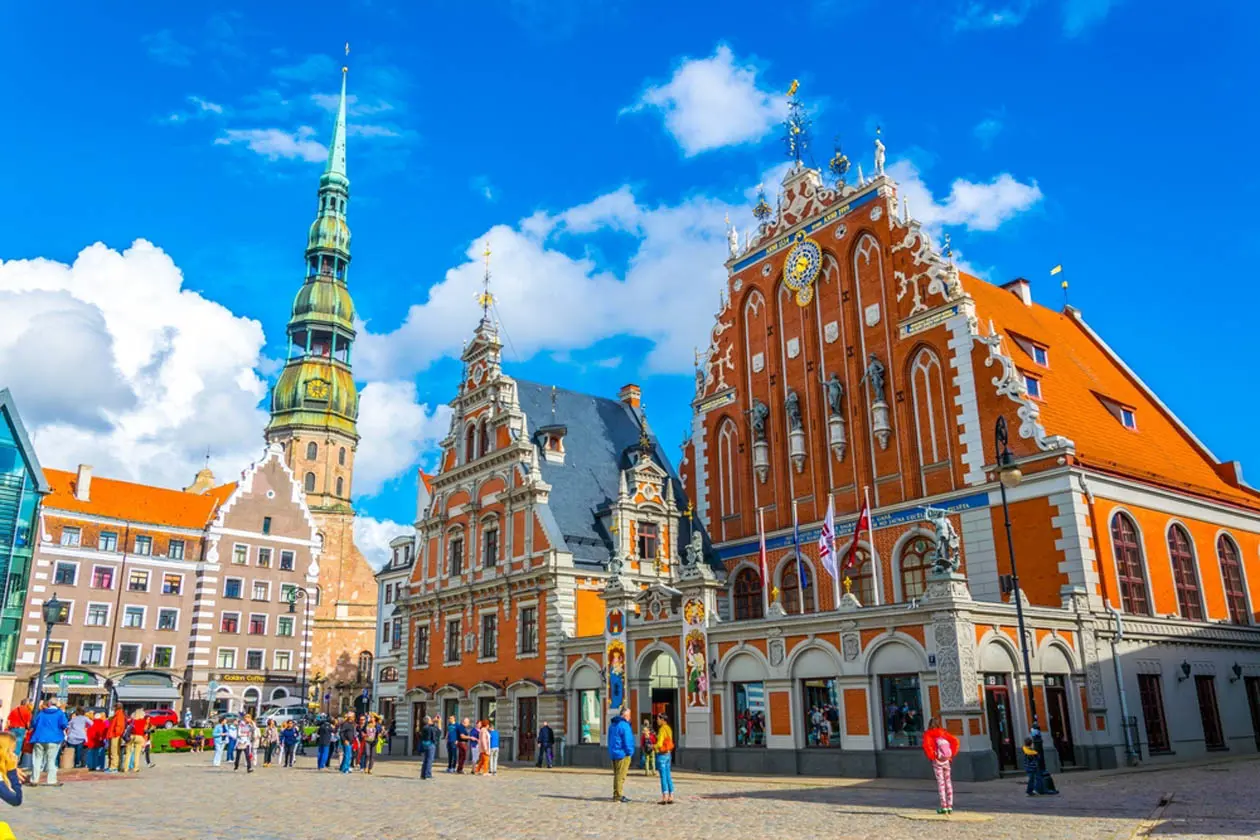
The Church of St. Peter. Photo: Sisterscom.com / Shutterstock
The Swedish Gate
The Swedish Gate, a simple arch, is the last part that remains of the old city walls. The city’s traditional meeting place is found near the rectangular clock, which is situated at the far west end of the old city.
In Maza Pils Street, between numbers 17 and 21, there are three Medieval buildings that represent an equal number of architectural styles. The fifteenth-century building at number 17 is the oldest stone house in Latvia.
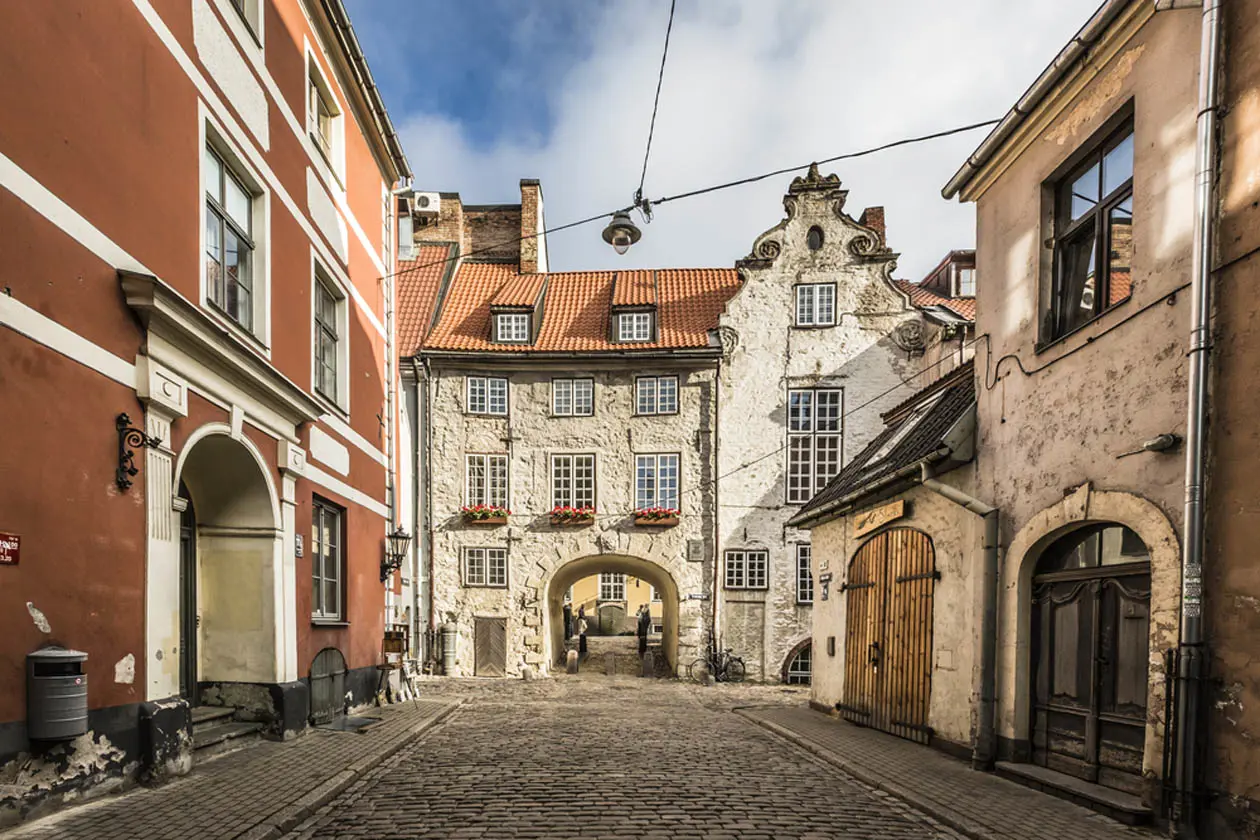
The Swedish Gate. Photo: Sisterscom.com / Shutterstock
The suburbs of Riga
The suburbs of Riga are no less attractive. A short distance from the city are the beaches of Jurmala, surrounded by sweet-smelling pine forests. Majori and Bulduri are sections of coast with blue flag beaches.
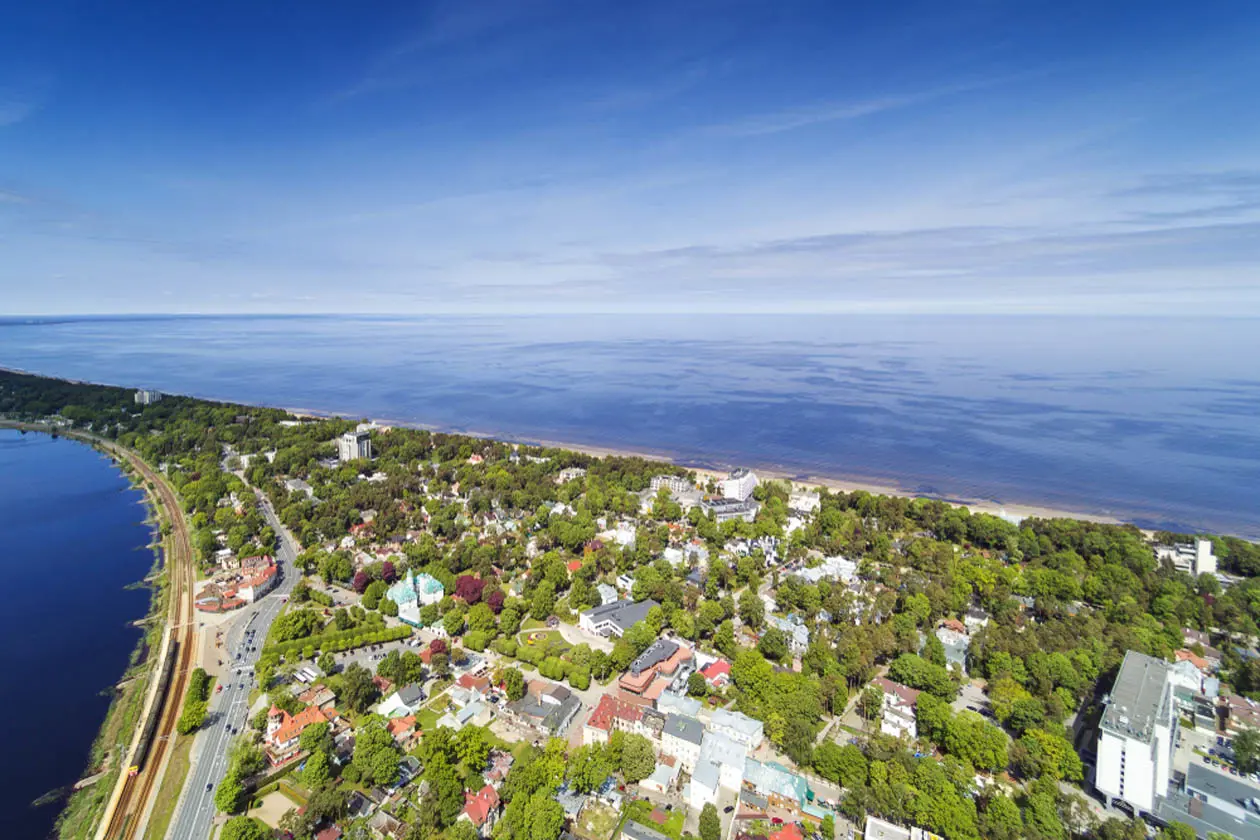
Jurmala. Photo: Sisterscom.com / Shutterstock
Eastern Latvia is home to the Gaujas National Park, through which the Gauja River flows, a panoramic area and canoeing training site. Charming countryside and pretty towns, such as Kuldiga, with a Medieval atmosphere, and Liepaja, the farthest facing the sea, can be found to the west of Riga.
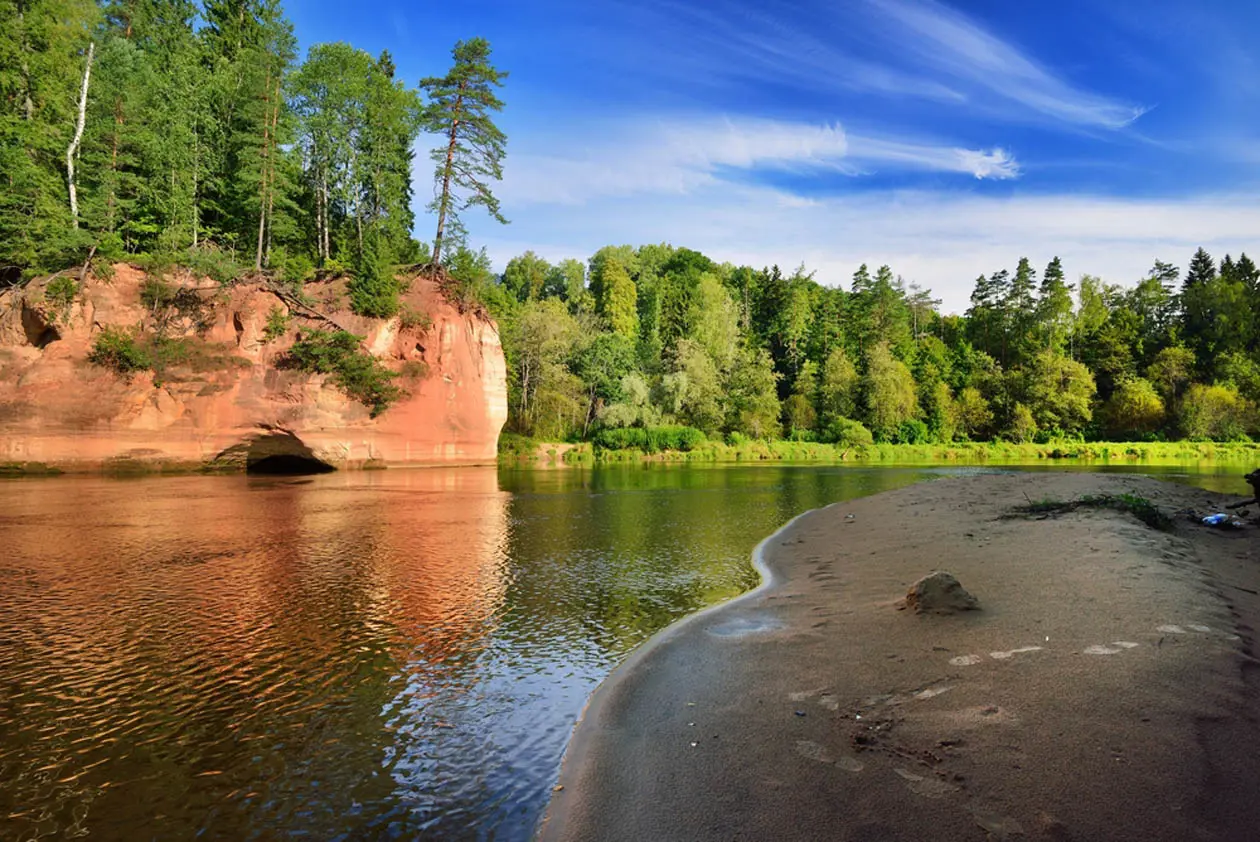
Gaujas National Park. Photo: Sisterscom.com / Shutterstock
Inland, south of Riga, is the Rundale Palace, a Baroque building furnished in Rococo style which was designed by the Italian architect Francesco Bartolomeo, who also designed the Winter Palace in St. Petersburg.
Text by Federica Fusco
Updated by Alisè Vitri
Avion Tourism Magazine
Photos: Copyright © Sisterscom.com Shutterstock
Copyright © Sisterscom.com - Riproduzione vietata
Photos: Copyright © Sisterscom.com Shutterstock
Copyright © Sisterscom.com - Riproduzione vietata
Video: www.latvia.travel
Tourism Board
www.latvia.travel
www.liveriga.com
Partnership with Booking.com
Where to sleep in Riga

Riga. Photo: Sisterscom.com / Shutterstock
Riga is a welcoming city and offers different possibilities for accommodation.
To find the ideal hotel and the best offers you can do a search for the stars but also for districts or landmarks.
STARS
LANDMARKS
where to go IN RIGA
Monuments of Riga
 Photo: Sisterscom.com / Shutterstock
Photo: Sisterscom.com / ShutterstockDANNENSTERN HOUSE (Danenšterna nams)
The city’s most interesting example of Baroque architecture. Built in 1969, it was owned by a rich Dutch merchant to whom the King of Sweden (at the time Riga was under Swedish rule) gave the title "von Dannenstern".

Photo: Sisterscom.com / Shutterstock
RIGA CASTLE (Rīgas pils)
Built in 1330, it was originally the seat of the German Knights of the Order of the Sword. The castle has been changed considerably over the centuries and has therefore lost its original Medieval appearance. Today it is the official residence of the President of Latvia.

Photo: Sisterscom.com / Shutterstock
THE CAT HOUSE
Friedrich Schefel and Heinrich Scheel are regarded as pioneers of Riga Art Nouveau architecture. The Cat House, designed by the architect Friedrich Schefel, was built in 1909 in the style of a medieval castle.The cats stand on the corner turrets of a building facing the Great Guild on Līvu Square.

Photo: Sisterscom.com / Shutterstock
ST. PETER'S LUTERAN CHURCH
One of the oldest examples of Medieval churches in the Baltic region, the church was built for the first time in the thirteenth century. It was destroyed during World War II and restored in 1973. Its spire is of considerable height: 123.25 metres. The church also houses ancient tombstones.

Photo: Sisterscom.com / Shutterstock
HOUSE OF BLACKHEADS (Melngalvju nams)
An old building dating back to the fourteenth century which was originally used for official business by the city’s merchants. In the fifteenth century it was used by members of the "Society of Black Heads", a corporation of young or unmarried merchants and ship captains ofcities of the Hanseatic League who chose St. Maurice (a black Moor, hence the name “Black Heads”) as their patron saint. The building was destroyed during World War II and was rebuilt only during the nineties.

Photo: Sisterscom.com / Shutterstock
RIGA CATHEDRAL (Doma baznīca)
Construction began in 1211 on an archiepiscopal chapel to which a monastery was added later. Over the centuries the building has undergone numerous modifications due to a series of fires. It is the largest church in Latvia and features various styles that range from Gothic to Baroque. It houses a important organ dating back to 1883.
Museums of Riga

Photo: Sisterscom.com / Shutterstock
LATVIAN NATIONAL ART MUSEUM
The Latvian National Art Museum, reopened in 2016, offers a new permanent exhibition on Latvian art of the nineteenth and twentieth centuries, with particular attention to the various stylistic periods and to the artists who determined them.

Photo: Sisterscom.com / Shutterstock
MUSEUM OF THE HISTORY OF RIGA AND NAVIGATION
The origin of Museum of the History of Riga and Navigation dates back to 1773 and is the oldest public museum in Latvia and one of the oldest in Europe. The museum is located in a 13th-20th century architectural monument: the Riga Dome Cathedral with a church, the gothic Cross Gallery, and a museum. Is possible to see: ancient Latvian ornaments, tools, weapons, weights and measures from the time of the Hanseatic League, the world’s smallest photo camera Minox and "Lielais Kristaps" (Great Kristaps) and more.
Excursions in Riga

Photo: Sisterscom.com / Shutterstock
TRIPS ON THE RIVER DAUGAVA
There are numerous boats taking visitors on trips on the River Daugava from which a historic view of Riga can be admired. Trips on board an electric bus that travels through the narrow streets of the city can also be taken and these give tourists the opportunity to see the most beautiful and interesting sites.

Photo: Sisterscom.com / Shutterstock
JURMALA
Jurmala has a mild climate, sea and a white sand beach that stretches for almost 33 kilometers, a pine forest and the Lielupe River. Also worth seeing are the houses built of wood in the typical architectural style of Jurmala of the twentieth century.
Partnership with GetYourGuide
All Tours and excursions
News & Useful info
You might be interested in
Other destinations
Airports nearby Riga



